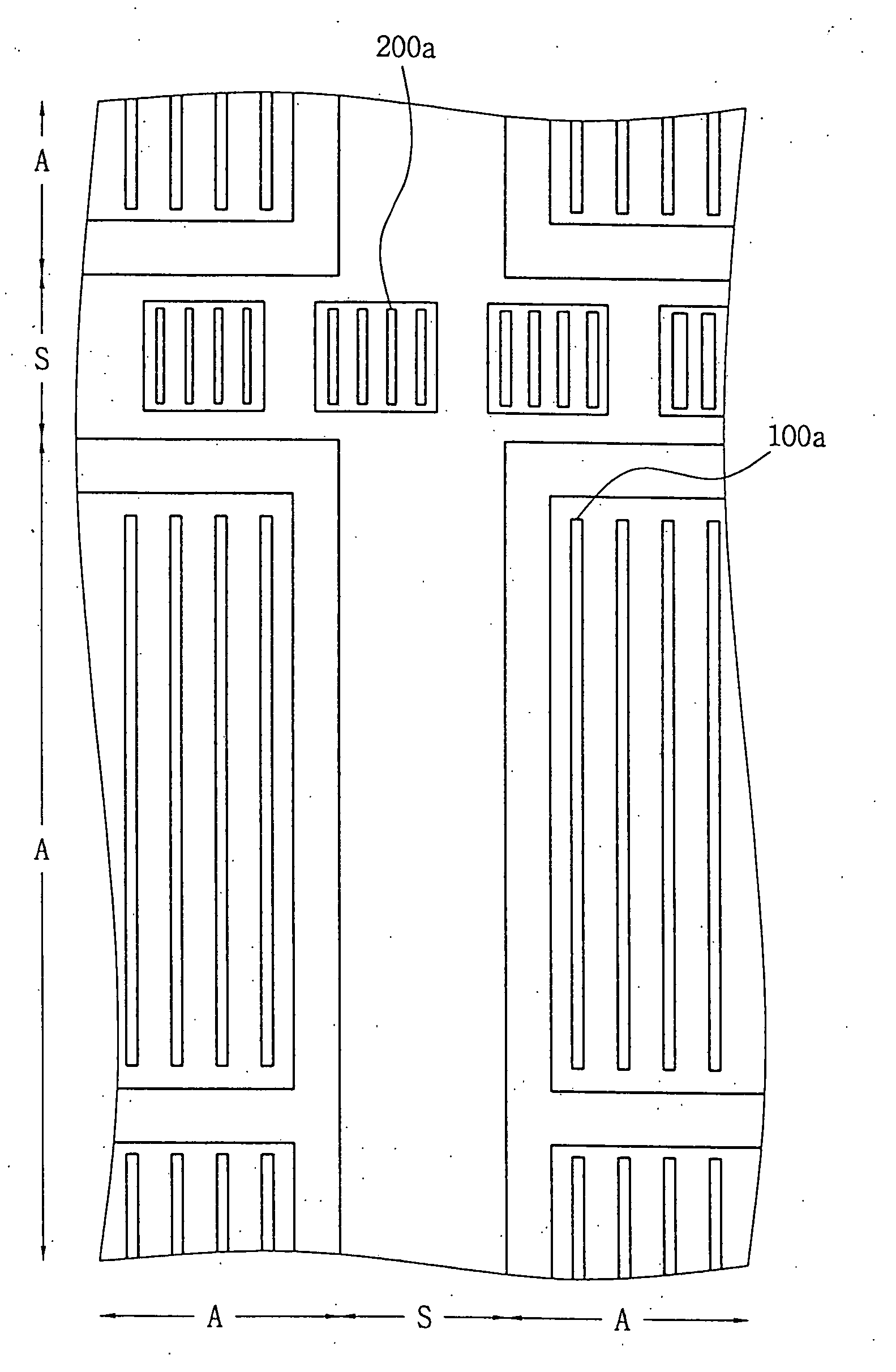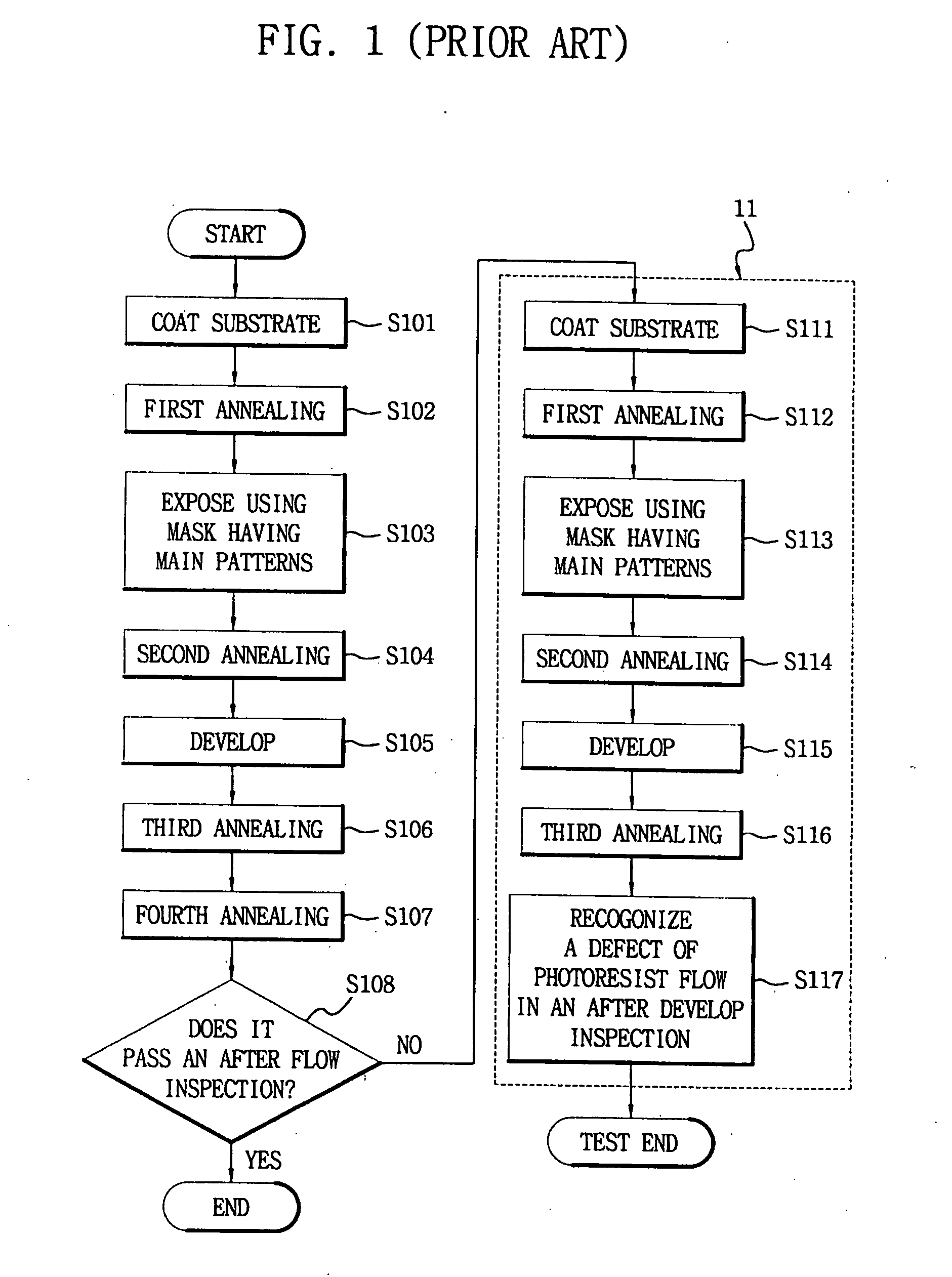Photoresist pattern, method of fabricating the same, and method of assuring the quality thereof
a technology of resist pattern and photoresist pattern, which is applied in the direction of semiconductor/solid-state device testing/measurement, semiconductor/solid-state device details, instruments, etc., can solve the problems of high cost, large and the use of exposure light having a short wavelength, so as to reduce the critical dimension of main pattern and reduce the critical dimension of test pattern
- Summary
- Abstract
- Description
- Claims
- Application Information
AI Technical Summary
Benefits of technology
Problems solved by technology
Method used
Image
Examples
Embodiment Construction
[0035] The present invention will be described in more detail hereinafter with reference to the accompanying drawings.
[0036] A photoresist pattern of the present invention, as shown in FIG. 2a or 2b, includes main patterns 100a or 100b in device-forming regions A defined on a semiconductor substrate, and a plurality of test patterns 200a or 200b in scribe regions S, wherein the scribe regions S separate the device-forming regions A from one another. The main patterns 100a or 100b have a given critical dimension. The openings of the test patterns 200a or 200b have shapes identical to those of the main patterns 100a and 100b and have critical dimensions different from each other. As will be described below, the test patterns 100a or 100b are dedicated for use in determining whether a defect had occurred in reflowing the photoresist to form the main patterns 100a or 100b.
[0037] The main patterns may be in the form of patterns 100a of lines and spaces (FIG. 2a) for use in forming line...
PUM
| Property | Measurement | Unit |
|---|---|---|
| temperature | aaaaa | aaaaa |
| temperature | aaaaa | aaaaa |
| temperature | aaaaa | aaaaa |
Abstract
Description
Claims
Application Information
 Login to View More
Login to View More - R&D
- Intellectual Property
- Life Sciences
- Materials
- Tech Scout
- Unparalleled Data Quality
- Higher Quality Content
- 60% Fewer Hallucinations
Browse by: Latest US Patents, China's latest patents, Technical Efficacy Thesaurus, Application Domain, Technology Topic, Popular Technical Reports.
© 2025 PatSnap. All rights reserved.Legal|Privacy policy|Modern Slavery Act Transparency Statement|Sitemap|About US| Contact US: help@patsnap.com



